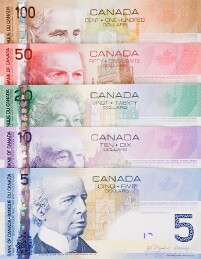The Canadian dollar gave up all of the gains it had achieved against its main counterparts earlier on Monday, following a drop in oil prices that weighed on the loonie. Canadian economic data was supportive of the currency today as wholesale sales were better than expected in February, but the positive data was overshadowed by concerns about a global crude oil supply glut.
Oil prices shed about 1% today to drag on a downtrend that began last week as investors awaited a decision from the Organization of the Petroleum Exporting Countries regarding production cuts. A deal to reduce output, which was agreed upon by members of the organization and other major oil producing countries in 2016, will end in June 30 and no extension was announced until today.
The deal helped oil prices recover in recent months. However if not extended, Russia, Iran, and other major producers will pump more crude into the market, which will have a sharp negative effect on oil prices. These concerns took away support from the Canadian dollar, which is viewed as a commodity currency since crude oil is one of Canadaâs main exports.
The loonie touched its strongest level against the US dollar since April 19 earlier today after Statistics Canada said in a report on wholesale trade that wholesale sales fell 0.2% in February following four months of gains. The data was better than estimates of a 1.0% decline, amid drops smaller than expected in wholesale sales of household goods, food, beverage, and tobacco.
USD/CAD traded at 1.3512 as of 18:55 GMT on Monday from 1.3412 at 10:30 GMT, the pairâs lowest level since April 19. USD/CAD began trading today at 1.3481.
GBP/CAD was at 1.7277 from 1.7169 at 12:05 GMT, which also was the pairâs weakest level since April 19. GBP/CAD started the week at 1.7281.
If you have any questions, comments or opinions regarding the Canadian Dollar,
feel free to post them using the commentary form below.
